Interim Budget Summary 2024-2025
Interim Budget Summary 2024-2025
Recently, the Interim Budget 2024-25 was tabled in the parliament. It envisions ‘Viksit Bharat’ by 2047, with all-round, all-pervasive, and all-inclusive development.
Interim Budget 2024-2025
- India’s Finance Minister presented the interim budget for financial year 2024 on February 1.
- India is scheduled to undergo general elections in mid-2024, which is why the budget announcement by the incumbent government is called an interim budget.
- The comprehensive financial budget follows after general elections.
What Is An Interim Budget?
- The interim budget functions as a short-term financial plan to fund central government spending until elections are held and a new central government assumes power.
- It outlines its anticipated expenditures and receipts till the formation of the new government.
- The ruling government cannot include any major scheme in the interim budget as it could influence the voters, as per the Election Commission’s Code of Conduct.
- The government in power cannot also deliver the Economic Survey along with the interim budget.
-
Purpose Of Interim Budget
- To ensure the continuity of essential government functions until the new administration assumes office.
- Interim Budget 2024 Timeline: The interim budget’s effectiveness extends only until March 31, 2024, restricting the spending power of the current government thereafter.
- Votes on Account Provision: As there is no constitutional provision for an interim budget, the government utilises ‘votes on account’ provision to secure funds for the interim period.
What is the Difference Between Interim Budget and Vote on Account?
| Feature | Interim Budget | Vote on Account |
| Constitutional Provision | Article 112 | Article 116 |
| Purpose | Financial Statement presented by the government ahead of general elections. | To meet essential government expenditures for a limited period until the budget is approved. |
| Duration of Expenditure | Covers a specific period, usually a few months until a new government is formed and a full budget is presented. | It is generally granted for two months for an amount equivalent to one-sixth of the total estimation. |
| Policy changes | Can propose changes in the tax regime | Cannot change the tax regime under any circumstances |
| Impact on Governance | Provides continuity in governance during the transition period between two governments. | Ensures the smooth functioning of the government and public services until the regular budget is approved. |
Interim Budget Vs Full Fledged Budget
| Aspect | Interim Budget | Full Fledged Budget |
| Timing | Interim Budget Presented by the outgoing government before elections. | Full Fledged Budget Presented by the newly elected government. |
| Scope | Covers expenditures and receipts for a short period. | Encompasses all aspects of government finances for the fiscal year. |
| Purpose | Ensures continuity of essential functions temporarily. | Serves as a strategic guide for the entire fiscal year. |
| Policy Announcements | Limited major policy announcements. | Allows for comprehensive policy declarations. |
| Economic Survey | No presentation before the Interim Budget. | Usually presented a day before the Full Budget. |
Why is Interim Budget Called a ‘Vote on Account’?
- An interim Budget conventionally is also called a ‘vote-on-account’ because it serves as an authorisation to incur specific expenditures which is necessary till a new government comes to power.
- Effective Period and Extension: Generally, a vote-on-account remains effective for a period of two months and can get an extension if required.
-
Constitutional Basis
-
- Article 116 of the Constitution: Under Article 116, a vote-on-account is an upfront allocation of budget from the ‘Consolidated Fund of India’ to the incumbent government.
About Union Budget
- According to Article 112 of the Indian Constitution, the Union Budget also referred to as the annual financial statement, is a statement of the estimated receipts and expenditure of the government for the upcoming financial year.
- Budget word is not mentioned in the constitution.
- Union Budget Period: April 1 to March 31
- Prepared by: Department of Economic Affairs, Ministry of Finance is the nodal body responsible for preparing the Budget.
- Union Budget Classification: Union Budget is classified into Revenue Budget and Capital Budget.
- Revenue Budget: It includes the government’s revenue receipts and expenditure.
- Revenue Receipts: There are two kinds of revenue receipts – tax and non-tax revenue.
- Revenue expenditure: It is the expenditure incurred on day to day functioning of the government and on various services offered to citizens.
- Revenue Deficit: If revenue expenditure exceeds revenue receipts, the government incurs a revenue deficit.
- Capital Budget: It includes capital receipts and capital expenditure.
- Capital Receipts: Loans from public, foreign governments and RBI form a major part of the government’s capital receipts.
- Capital expenditure: It is the expenditure on development of machinery, equipment, building, health facilities, education etc.
- Revenue Budget: It includes the government’s revenue receipts and expenditure.
- Fiscal Deficit: Fiscal deficit is incurred when the government’s total expenditure exceeds its total revenue.
Interim Budget 2024 Highlights
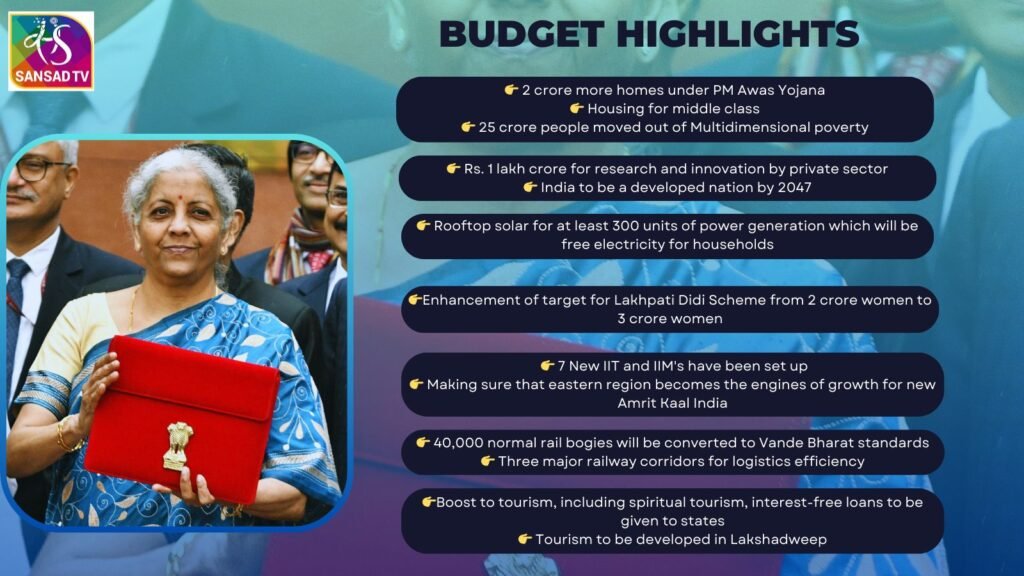
Interim Budget: Part A
People Centric Inclusive Development
- Viksit Bharat by 2047: The government is working towards making India ‘Viksit Bharat’ by 2047, with focus on sabka sath, sabka vikas.
- Inclusive Development and Growth: Government has been working towards promoting “all aspects” of inclusivity.
- Departure from Earlier Approach of ‘Provisioning Up-to-Village Level’: Development programmes (last 10 years) have targeted each and every household and individual, through housing for all, har ghar jal , electricity for all, cooking gas for all, bank accounts and financial services for all, in record time.
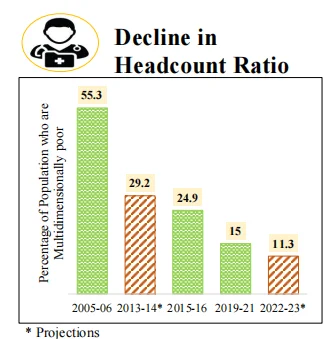
The government is focusing on four aspects of our society i.e., GYAN.
- GYAN: Garib’ (Poor), ‘Yuva’ (Youth), ‘Annadata’(Farmer) and’ Nari’ (Women).
Garib Kalyan, Desh ka Kalyan (Garib)
- Poverty: 25 crore people out of multi-dimensional poverty in the last 10 years.
- PM-Jan Dhan: DBT of Rs. 34 lakh crore using PM-Jan Dhan accounts led to savings of Rs. 2.7 lakh crore for the Government.
- PM-SVANidhi: It provided credit assistance to 78 lakh street vendors. 2.3 lakh have received credit for the third time.
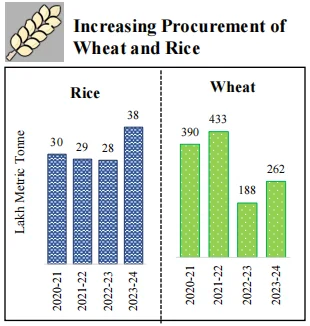 PM-JANMAN Yojana: Aid the development of particularly vulnerable tribal groups (PVTG).
PM-JANMAN Yojana: Aid the development of particularly vulnerable tribal groups (PVTG).- PM-Vishwakarma Yojana: Provides end-to-end support to artisans and crafts people engaged in 18 trades.
Welfare of Annadata (Farmers)
- PM-KISAN SAMMAN Yojana: Provided financial assistance to 11.8 crore farmers.
- PM Fasal Bima Yojana: Crop insurance is given to 4 crore farmers
- Electronic National Agriculture Market (e-NAM): Integrated 1361 mandis, providing services to 1.8 crore farmers with trading volume of Rs. 3 lakh crore.
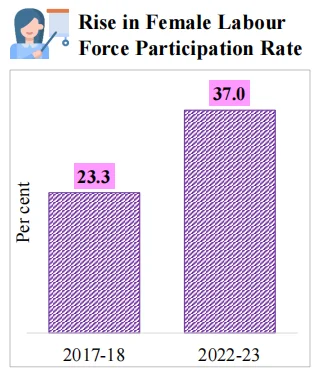
Momentum for Nari Shakti (Nari)
- Mudra Yojana: 30 crore Mudra Yojana loans given to women entrepreneurs.
- Female Enrolment: Increased female enrolment in higher education by 28 per cent in 10 years.
- 43 per cent of female enrolment in STEM courses, one of the highest in the world.
- PM Awas Yojana: Over 70% houses under PM Awas Yojana given to women from rural areas.
- Self Help Groups (SHG): 1 crore women assisted by 83 lakh SHGs to become Lakhpati Didis.
Yuva’ (Youth)
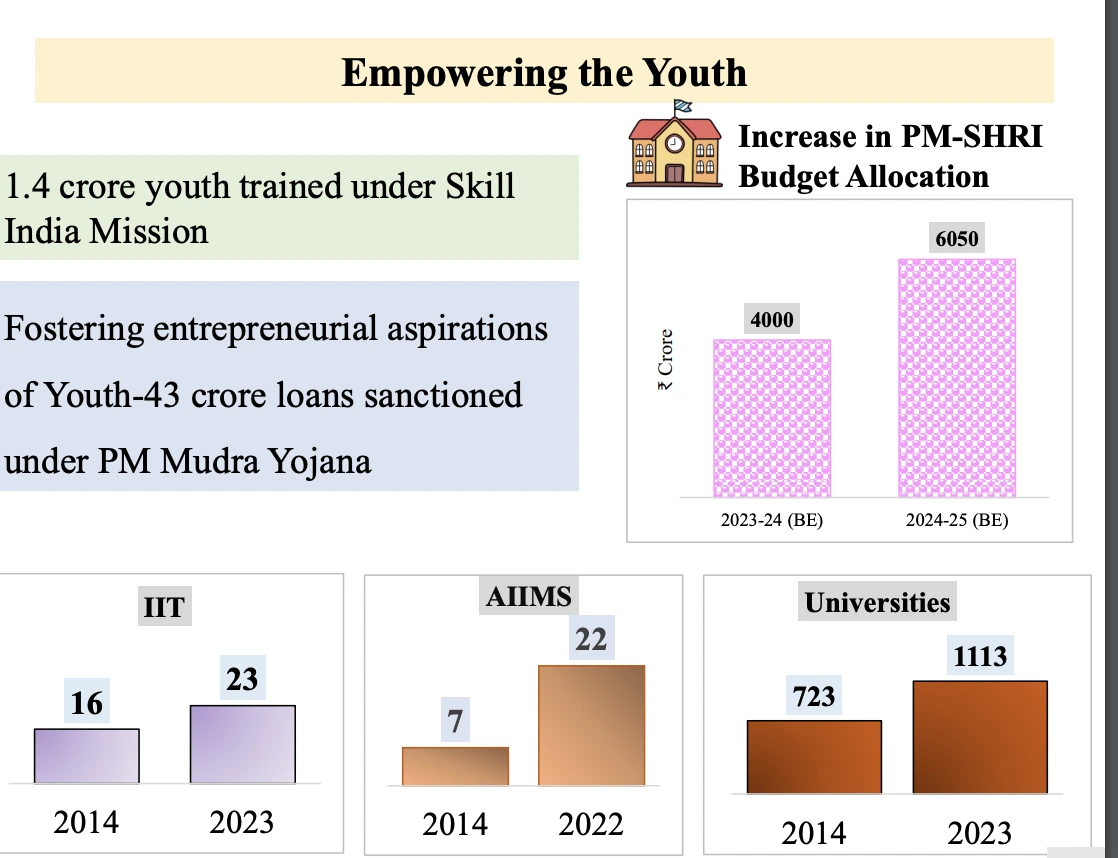
- 1.4 crore youth trained under Skill India Mission.
- Fostering entrepreneurial aspirations of Youth: 43 crore loans sanctioned under PM Mudra Yojana.
Strategy for Amrit Kaal
Sustainable Development
- Commitment to meet ‘Net Zero’ by 2070:
- Viability gap funding for wind energy.
- Setting up of coal gasification and liquefaction capacity.
- Phased mandatory blending of CNG, PNG and compressed biogas.
- Financial assistance for procurement of biomass aggregation machinery.
- Rooftop Solarization:
- 1 crore households to obtain 300 units free electricity every month through rooftop solarization.
- Each household is expected to save Rs.15000 to Rs.18000 annually.
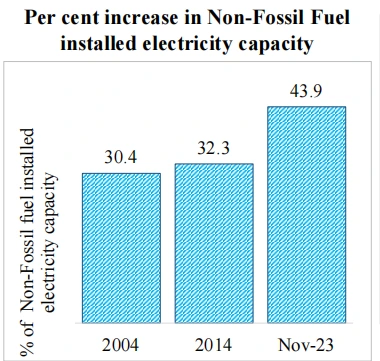 e-Mobility
e-Mobility-
- Adoption of e-buses for public transport networks.
- Strengthening e-vehicle ecosystem by supporting manufacturing and charging.
- Environmentally Friendly Alternatives:
- New scheme of biomanufacturing and bio-foundry to be launched to support environment friendly alternatives
- Other Measures:
- Over 10 crore LPG connections released under PM Ujjwala Yojana.
- 36.9 crore LED bulbs, 72.2 lakh LED Tube lights, and 23.6 lakh Energy efficient fans distributed under UJALA.
- 1.3 crore LED Street Lights installed under Street Lighting National Programme.
Infrastructure and Investment
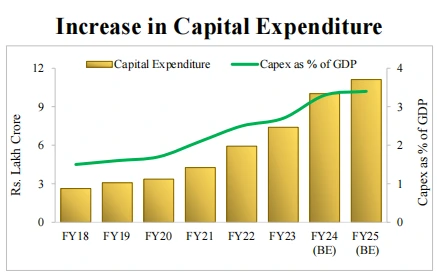
- Substantive development of all forms of infrastructure-Physical, Digital and Social.
- Outlay for infrastructure has been increased to Rs 11.11 lakh crores in FY25.
- Digital Public Infrastructure (DPI) promoted formalisation and financial inclusion.
- Promotion of urban transformation via Metro rail and NaMo Bharat.
- Railways:
- 3 major economic railway corridor programmes identified under the PM Gati Shakti to be implemented to improve logistics efficiency and reduce cost:
- Energy, mineral and cement corridors
- Port connectivity corridors
- High traffic density corridors
- Forty thousand normal rail bogies to be converted to Vande Bharat standards.
- 3 major economic railway corridor programmes identified under the PM Gati Shakti to be implemented to improve logistics efficiency and reduce cost:
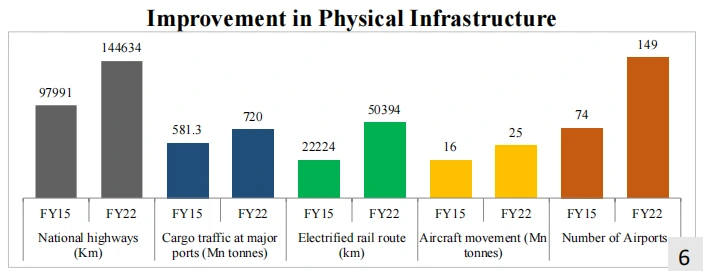
-
Aviation Sector:
-
- Number of airports in the country doubled to 149.
- 517 new routes are carrying 1.3 crore passengers.
- Indian carriers have placed orders for over 1000 new aircrafts.
- Expansion of existing airports and comprehensive development of new airports under UDAN scheme.
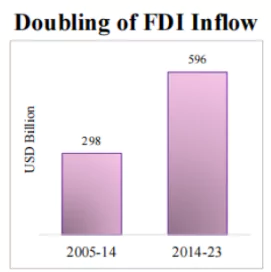
-
Investments:
-
- FDI inflow during 2014-23 of USD 596 billion was twice of the inflow during 2005-14.
- Promotion of foreign investment via bilateral investment treaties to be negotiated.
Inclusive Development
-
Health
- Encourage Cervical Cancer Vaccination for girls (9-14 years).
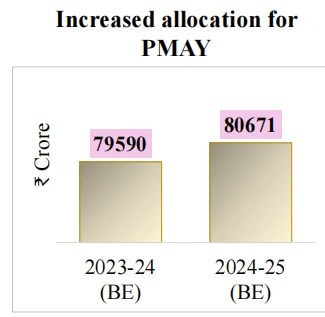 Saksham Anganwadi and Poshan 2.0 to be expedited for improved nutrition delivery, early childhood care and development.
Saksham Anganwadi and Poshan 2.0 to be expedited for improved nutrition delivery, early childhood care and development.- U-WIN platform for immunisation efforts of Mission Indradhanush to be rolled out.
- Health cover under Ayushman Bharat scheme to be extended to all ASHA, Angawadi workers and helpers.
-
Housing
- PM Awas Yojana (Grameen):
-
- Pradhan Mantri Awas Yojana (Grameen) is close to achieving the target of 3 crore houses, with an additional 2 crore targeted for next 5 years.
- Housing for Middle-Class scheme to be launched to promote middle class to buy/build their own houses.
-
- PM Awas Yojana (Grameen):
-
Tourism
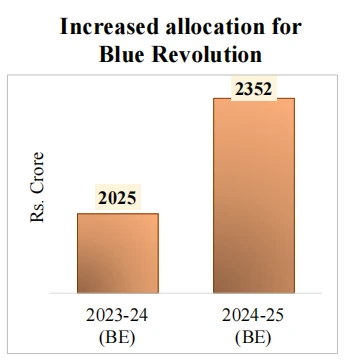
-
- States to be encouraged to take up comprehensive development of iconic tourist centres including their branding and marketing at global scale.
- Framework for rating of the tourist centres based on quality of facilities and services to be established.
- Long-term interest-free loans to be provided to States for financing such development on matching basis.
- G20 meetings in 60 places presented diversity of India to global audience
- Projects for port connectivity, tourism infrastructure, and amenities will be taken up in islands, including Lakshadweep.
Agriculture and Food Processing
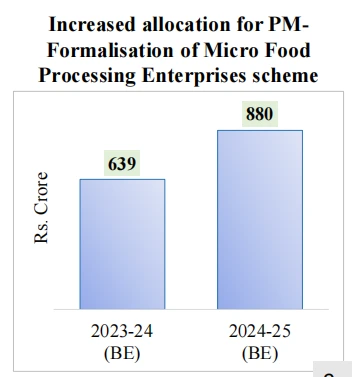
- Pradhan Mantri Kisan Sampada Yojana has benefitted 38 lakh farmers and generated 10 lakh employment.
- Pradhan Mantri Formalisation of Micro Food Processing Enterprises Yojana has assisted 2.4 lakh SHGs and 60000 individuals with credit linkages.
- Government will promote private and public investment in post-harvest activities.
- Application of Nano-DAP (Di-ammonium Phosphate) fertiliser to be expanded in all agro-climatic zones.
- Atmanirbhar Oilseeds Abhiyaan-Strategy to be formulated to achieve atma nirbharta for oilseeds.
- Comprehensive programme for dairy development to be formulated.
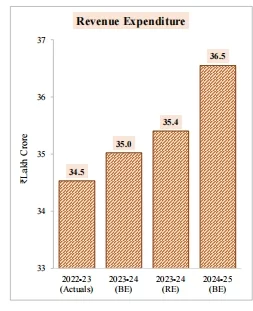 5 Integrated Aquaparks to be set up.
5 Integrated Aquaparks to be set up.
Financial Overview:
Revised Estimates 2023-24
- Total Receipts (other than borrowings): Rs.27.56 lakh crore, of which the tax receipts are Rs.23.24 lakh crore.
- Total Expenditure: Rs.44.90 lakh crore.
- Fiscal Deficit: 5.8 per cent of GDP for 2023-24.
Budget Estimates 2024-25
- Total Receipts (other than borrowings): Rs.30.80 Lakh Crore
- Total Expenditure: Rs.47.66 lakh crore
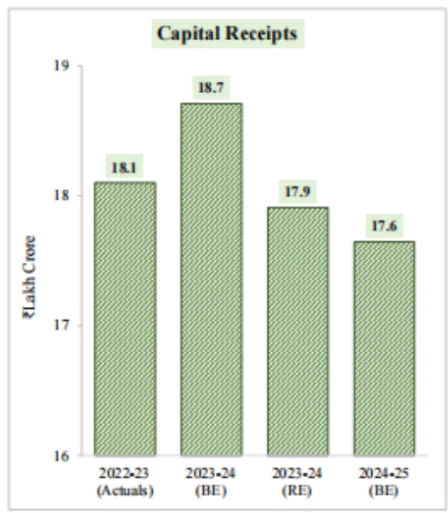 Fiscal Deficit: 5.1 percent of GDP.
Fiscal Deficit: 5.1 percent of GDP.- The scheme of fifty-year interest free loan for capital expenditure to states will be continued this year with a total outlay of Rs. 1.3 lakh crore.
Interim Budget: Part B
Direct Taxes
- Tax Collection and Return Files: Over the last ten years, the direct tax collections have more than tripled and the return filers have increased to 2.4 times.
- Tax rationalisation efforts over the years
-
- No tax liability for income upto Rs 7 lakh, up from Rs 2.2 lakh in FY 2013-14.
- Presumptive taxation threshold for retail businesses increased to Rs 3 crore from Rs 2 crore.
- Presumptive taxation threshold for professionals increased to Rs 75 lakh from Rs 50 lakh.
- Corporate income tax decreased to 22% from 30% for existing domestic companies.
- Corporate income tax rate at 15% for new manufacturing companies.
- Achievements in Tax-Payer Services
-
- Average processing time of tax returns has reduced to 10 days from 93 days in 2013-14.
- Faceless Assessment and Appeal introduced for greater efficiency.
- Updated income tax returns, new form 26AS and prefilled tax returns for simplified return filing.
- Reforms in customs leading to reduced import release time:
- Reduction by 47% to 71 hours at Inland Container Depots.
- Reduction by 28% to 44 hours at Air Cargo complexes.
- Reduction by 27% to 85 hours at Sea Ports.
Indirect Taxes
- FM proposes to retain same tax rates for indirect taxes and import duties
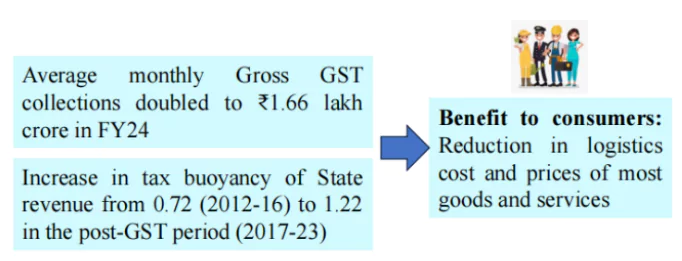 GST unified the highly fragmented indirect tax regime in India
GST unified the highly fragmented indirect tax regime in India-
- Average monthly gross GST collection doubled to Rs 1.66 lakh crore this year.
- GST tax base has doubled.
- State SGST revenue buoyancy (including compensation released to states) increased to 1.22 in the post-GST period(2017-18 to 2022-23) from 0.72 in the pre-GST period (2012-13 to 2015-16).
- 94% of industry leaders view transition to GST as largely positive.
- GST led to supply chain optimization.
- GST reduced the compliance burden on trade and industry
- Lower logistics cost and taxes helped reduce prices of goods and services, benefiting the consumers
Resilient Performance of the Indian Economy
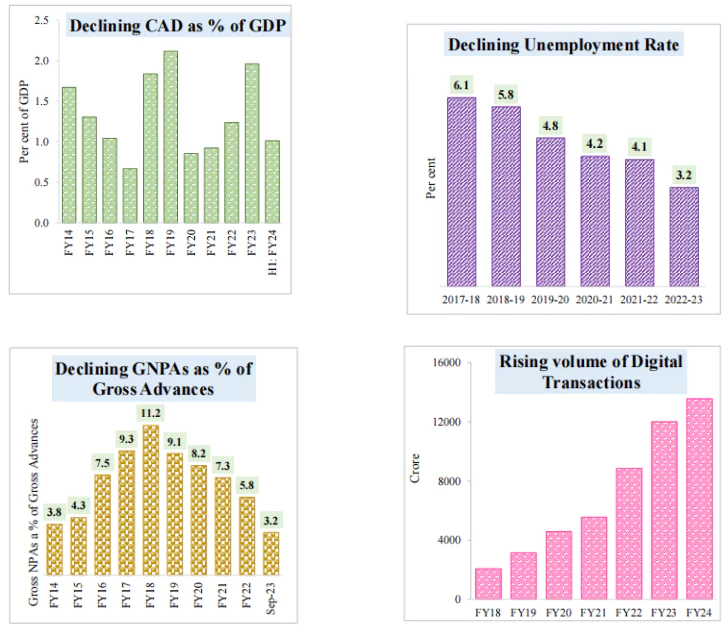
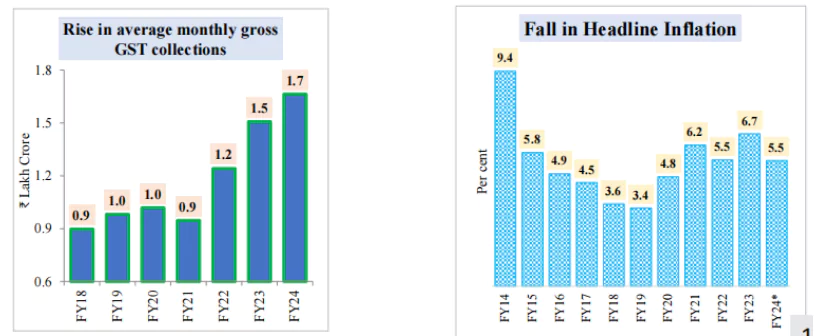
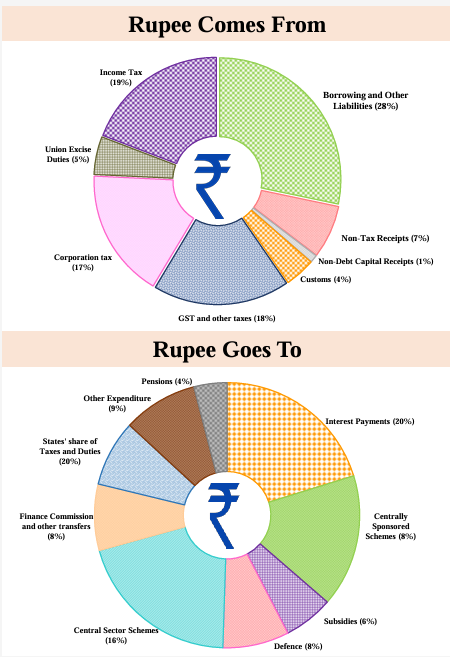
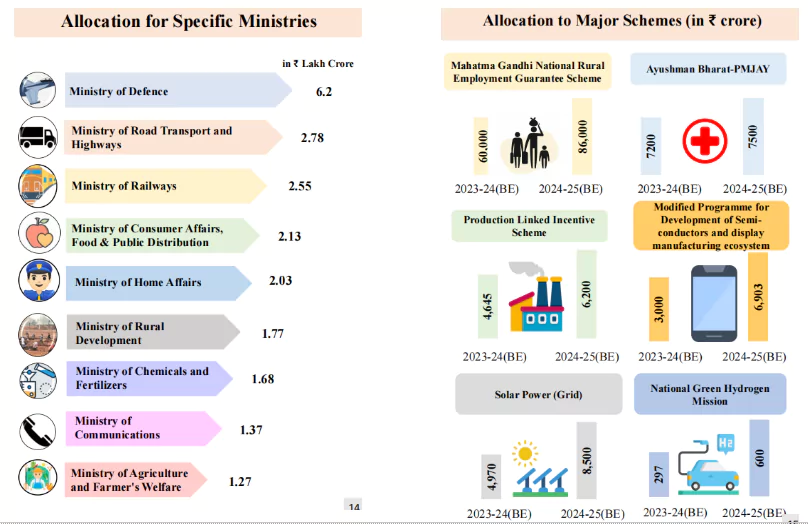
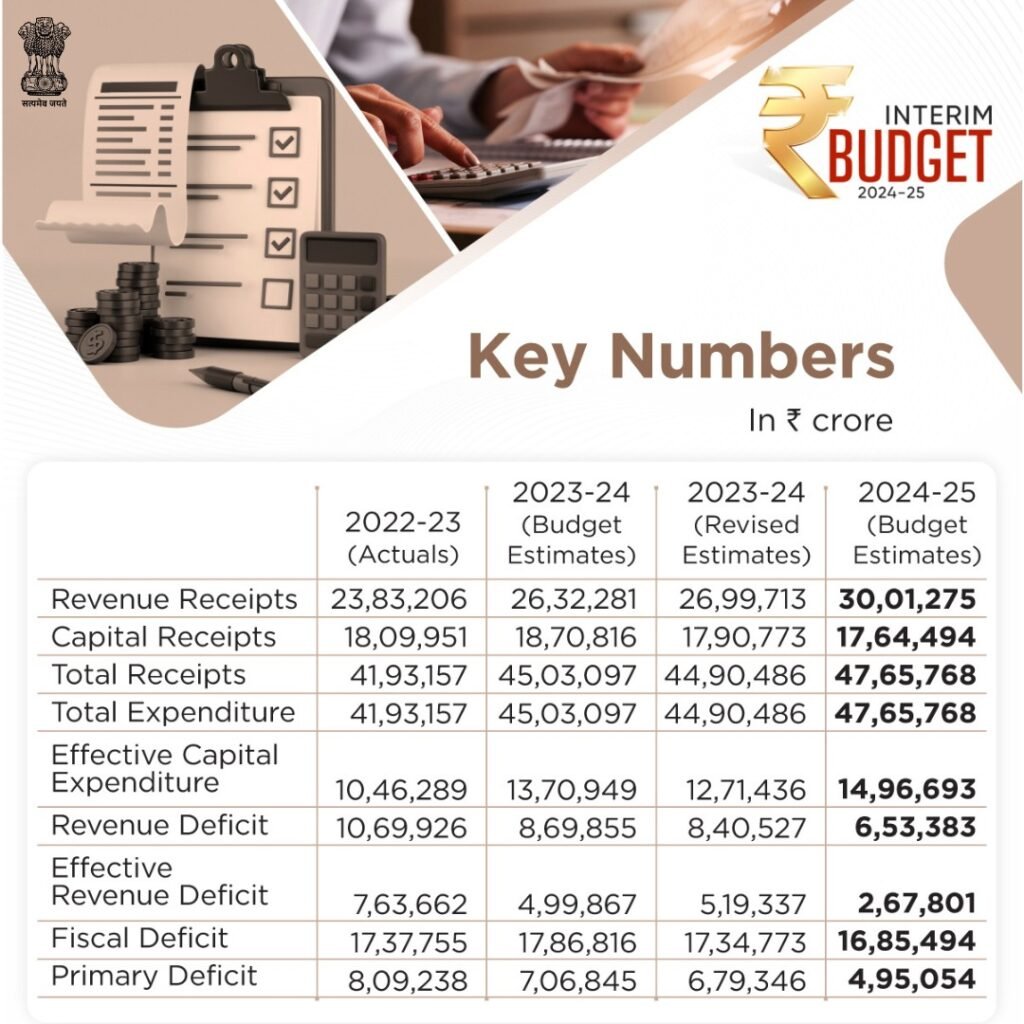
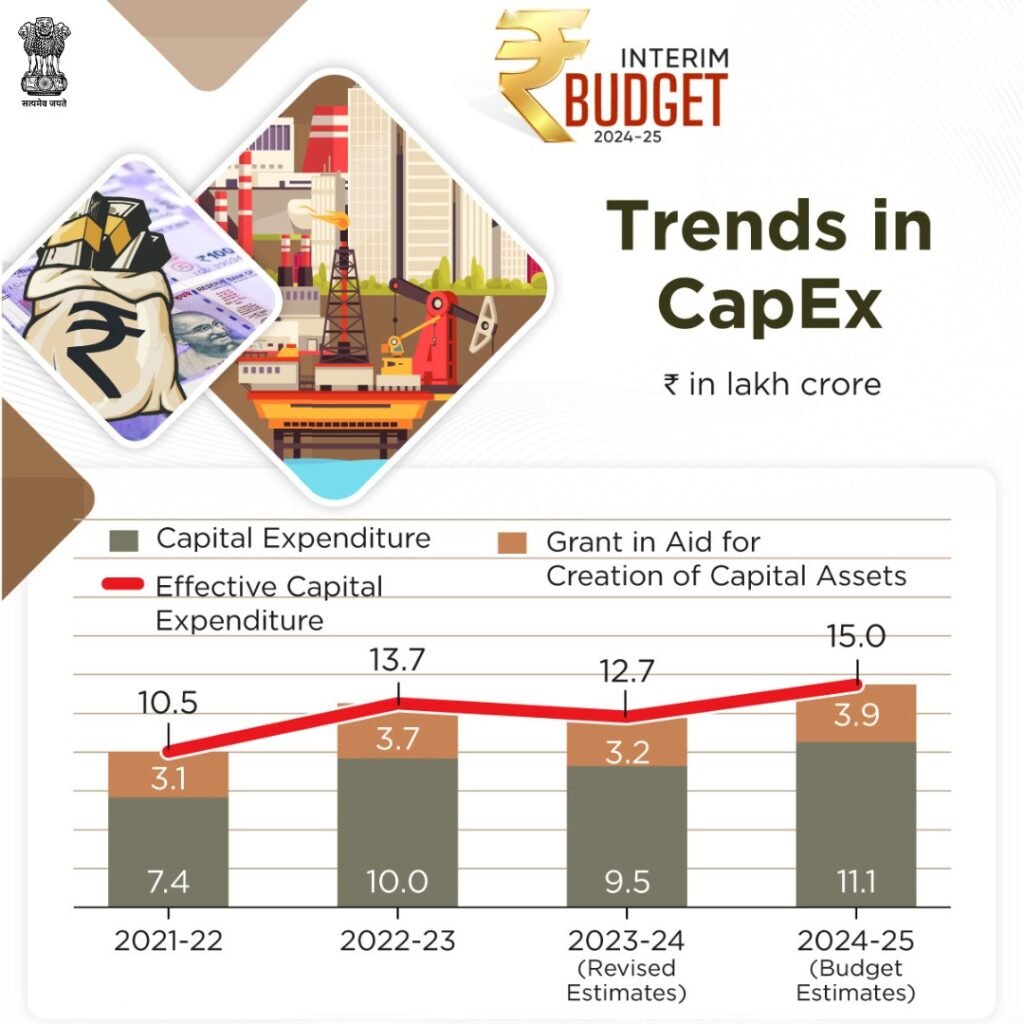
What are the Funds Related to the Budget in India?
- Consolidated Fund of India: Article 266 (1) of the Constitution consolidates all revenues, loans, and loan repayments received by the Union Government into a single fund known as the Consolidated Fund of India.
- Withdrawal needs parliament permission (except for Charged Expenditure like Judges’ salaries).
- Public Account of India: Under Article 266 (2), it includes incoming money from provident fund, small savings, postal deposit etc.
- Government acts similar to a banker transferring funds from here to there so parliament permission is not necessary.
- Contingency Fund of India: It is established under the Contingency Fund of India Act, 1950 and operates as an imprest in accordance with Article 267(1).
- It serves the purpose of offering advances to the government for unforeseen expenditures during the fiscal year, pending authorization by Parliament.
- Funds withdrawn from the Contingency Fund are replenished upon parliamentary approval through Supplementary Demands for Grants.